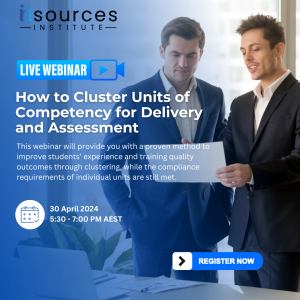In the dynamic world of vocational education, Registered Training Organisations (RTOs) are charged with crafting and executing training and assessment “journeys” that resonate with learners. This means devising robust training and assessment strategies (TAS) that are not only compliant but also compelling and cohesive.
To design these educational odysseys, a cross-functional team encompassing instructional designers, senior trainers, industry experts, and resource developers is assembled. Their mission is to guide learners toward attaining competencies that align with either individual units or full qualifications. It is a meticulous process, but the true stars of this journey are the learners themselves. Their engagement hinges on the journey’s relevance and coherence.
Nationally Recognised Training (NRT) hinges on Units of Competency (UoC), which are the benchmarks for industry-standard workplace tasks. Each unit is self-contained, comprising all elements necessary to meet industry benchmarks, including performance outcomes, knowledge and skills requirements, and assessment conditions.
However, the flip side to this rigour is the redundancy that can emerge across competencies. Many UoCs share common elements or steps in task execution, which leads us to a significant pedagogical challenge.
The Problem:
When a TAS encompasses multiple UoCs, content overlap is almost inevitable. Without addressing this redundancy, learners might redundantly traverse the same concepts, hampering their progress and engagement. Just as one does not relearn reading with every new book, our learners should not revisit the same concept with each new application.
The Solution:
Effective clustering involves grouping competencies into meaningful combinations that align with workplace needs. It requires the deconstruction of UoCs and the strategic reassembly into what we term “Clusters”. Done correctly, clustering not only addresses specific competency profiles but also streamlines content delivery and assessment, enhancing the efficiency of the learning process.
A Technical Challenge:
The initial step in clustering is the analytical deconstruction of UoCs to identify commonalities. Subsequently, RTOs must structure learning activities and assessments that cater to both shared and unique elements of each UoC. This holistic approach to learning and assessment should fulfil multiple UoC requirements concurrently while ensuring the integrity of each individual component.
RTOs must meticulously map the training and assessment tasks to the clustered units, safeguarding the program’s integrity. The design and development of a cluster are foundational to the effectiveness and compliance of the training program. Inadequate development can result in gaps that may compromise compliance with regulatory clauses.
Technical Training Available:
Insources Institute offers a webinar specifically designed to impart a methodical approach to clustering units of competency. Our aim is to ensure that the efficiencies gained through cluster-based delivery and assessment do not undermine the ability to meet regulatory standards.




